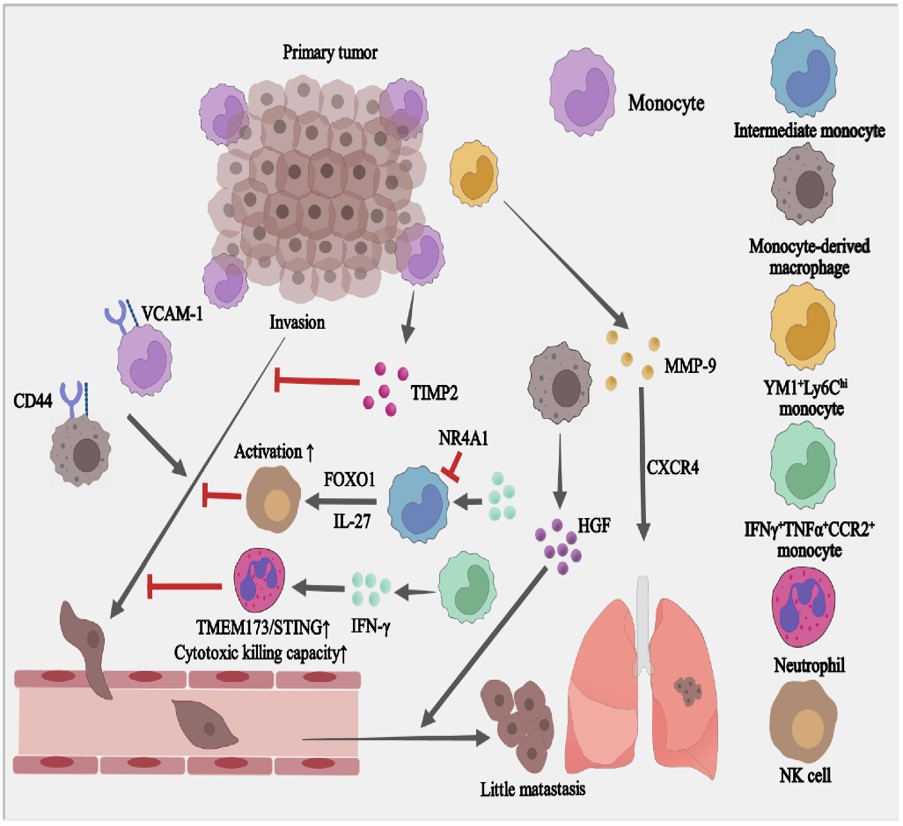All products and services are For Research Use Only and CANNOT be used in the treatment or diagnosis of disease.
Monocytes are a distinct type of white blood cell (leukocyte) that circulate throughout your body and destroy infected cells as well as harmful microorganisms (viruses, bacteria, fungus, and protozoa). They function in the innate defense response. Following a certain duration, monocytes get shipped by the circulatory system to many organs and tissues, including the liver, spleen, bone marrow, and lung. Upon the invasion of a pathogenic microorganism into the human body, monocytes undergo a transformation into either macrophages or dendritic cells, which have the capability to either eliminate the foreign entity or communicate with other blood cells in order to facilitate its eradication and further prevent the onset of infection. Several health disorders may lead to an abnormal monocyte count, either excessively low or excessively high, which is closely linked to the body's immune response.
 Fig.1 Monocytes affect the invasion and metastasis of tumor cells.1
Fig.1 Monocytes affect the invasion and metastasis of tumor cells.1
Types of Monocytes
Monocytes are roughly categorized into three subsets: classical, intermediate, and non-classical. Different types of monocytes display enormous functional and surface protein expression diversity.
Functions of Monocytes
Monocytes are the most massive cells in the blood and serve various functions, including:
Monocytes Cells at Creative Biolabs
The broadening grasp on monocyte cell biology has shed light on new therapeutic possibilities. To facilitate the conversion of monocyte cell research into clinical applications, Creative Biolabs provides several available ready-to-use monocyte cell products with strict quality control for global customers. Please feel free to contact us and welcome to inquire about the desired products and place an order.
Reference
 NEWSLETTER
NEWSLETTER
The latest newsletter to introduce the latest breaking information, our site updates, field and other scientific news, important events, and insights from industry leaders
LEARN MORE NEWSLETTER NEW SOLUTION
NEW SOLUTION
CellRapeutics™ In Vivo Cell Engineering: One-stop in vivo T/B/NK cell and macrophage engineering services covering vectors construction to function verification.
LEARN MORE SOLUTION NOVEL TECHNOLOGY
NOVEL TECHNOLOGY
Silence™ CAR-T Cell: A novel platform to enhance CAR-T cell immunotherapy by combining RNAi technology to suppress genes that may impede CAR functionality.
LEARN MORE NOVEL TECHNOLOGY NEW SOLUTION
NEW SOLUTION
Canine CAR-T Therapy Development: From early target discovery, CAR design and construction, cell culture, and transfection, to in vitro and in vivo function validation.
LEARN MORE SOLUTION

